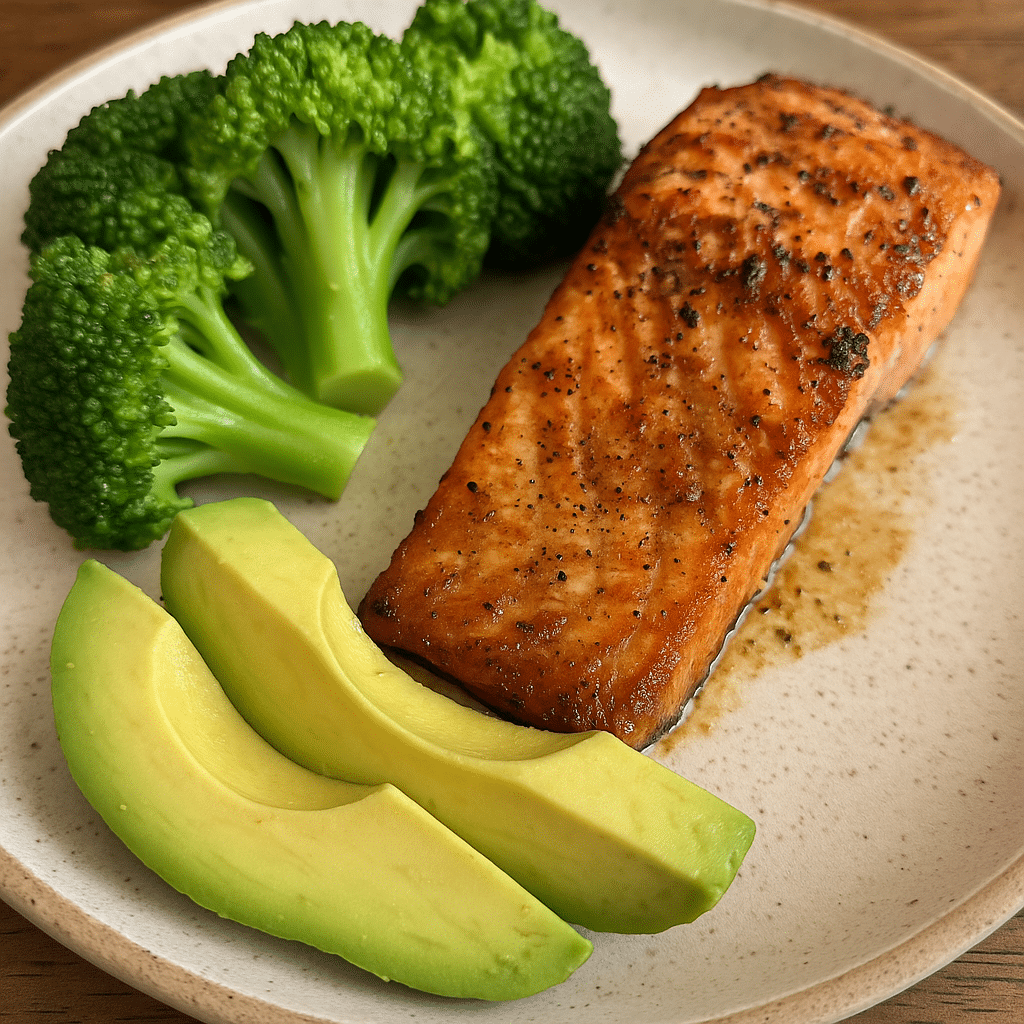GLP-1 friendly recipes aren’t just a trend—they’re a practical, powerful way to support your metabolism and overall wellness. Whether you’re managing type 2 diabetes, aiming for weight loss, or just eating more mindfully, GLP-1 friendly recipes offer satisfying, nourishing options your body will love. These meals are low in blood sugar-spiking carbs, high in protein and fiber, and packed with vibrant flavor.
Welcome to CrennRecipes! I’m Chef Crenn, passionate about food, creativity, and community. I’ve crafted culinary delights for over a decade, blending traditional techniques with modern creativity. My love for cooking started in my grandmother’s kitchen, learning fresh ingredients and flavor magic. I’ve honed skills in top kitchens through countless experimentation. Cooking is art, science, and connection. My recipes inspire confidence, encourage experimentation, and bring people together through food joy. Every dish tells a story.
In this guide, we’ll break down what makes GLP-1 friendly recipes truly work—plus how to cook meals that keep you full, energized, and on track. Let’s dig into the science and flavor behind this smart way of eating. And if you’re ever looking for community tips or real-time ideas, follow us on Facebook where we share weekly GLP-1 friendly tips and recipes.
Table of Contents
GLP-1 Friendly Recipes Start with the Right Ingredients
The heart of every GLP-1 friendly recipe lies in smart, purposeful ingredients. These foods naturally support stable blood sugar, promote satiety, and align with GLP-1 medication goals like reduced appetite and slower digestion. Choosing the right base for your meals makes it easier to stick with your health goals—without sacrificing flavor.
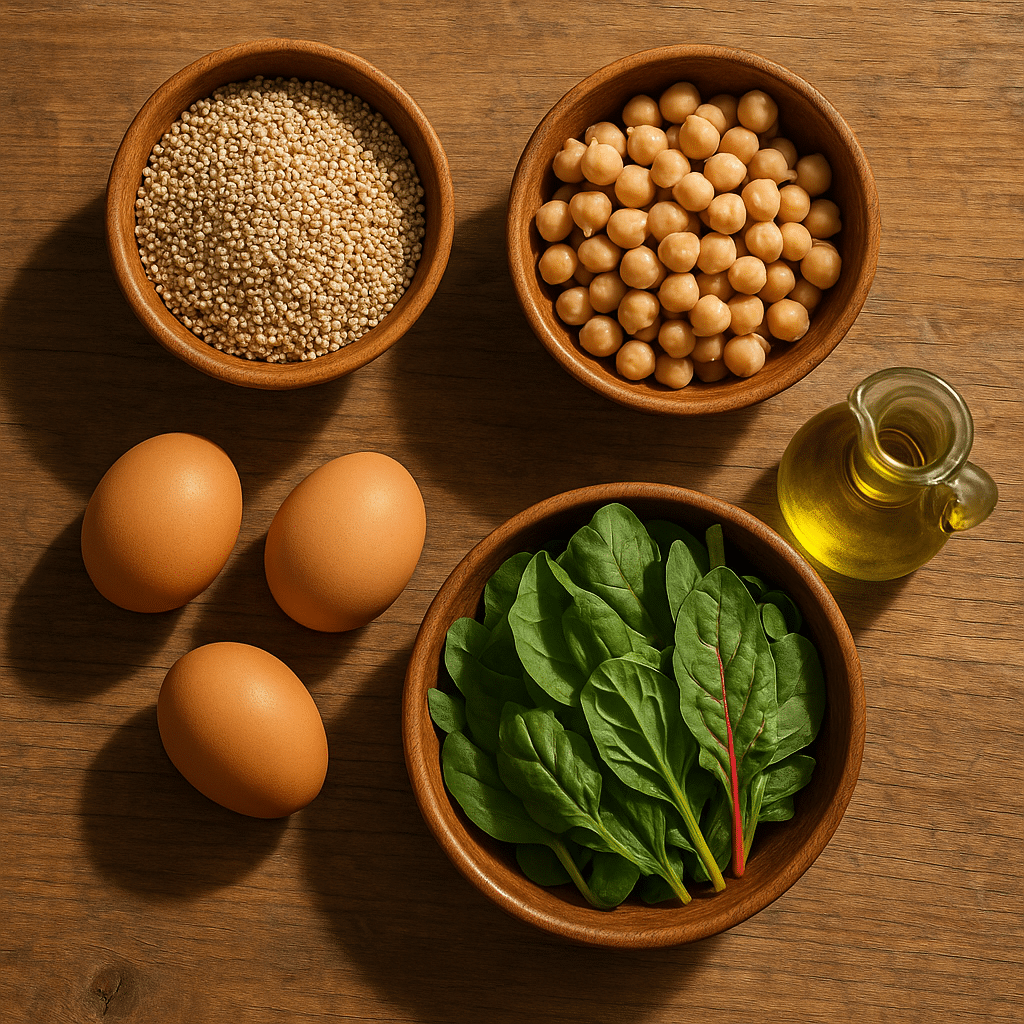
Protein-Packed Powerhouses
Protein is non-negotiable in GLP-1 friendly recipes. It keeps you full, supports lean muscle, and helps blunt blood sugar spikes. Think grilled chicken, wild salmon, grass-fed beef, tofu, and cottage cheese. Try our Buffalo Chicken Cottage Cheese Bowl or Cottage Cheese Egg Bites for savory, protein-rich inspiration.
Eggs are another staple. Our Egg Flight recipe shows how versatile and fun a high-protein breakfast can be—even when you’re on GLP-1 medications.
Fiber-Rich Vegetables and Smart Carbs
To maintain GLP-1 effectiveness and avoid blood sugar swings, fiber is your best friend. Load your plate with leafy greens, broccoli, zucchini, and bell peppers. For carbs, lean on lentils, chickpeas, and ancient grains like quinoa. Our Mediterranean Quinoa Wrap and Sweet Potato Rice Bowl offer perfect balance without the crash.
By combining protein, fiber, and healthy fats, GLP-1 friendly recipes work with your body’s natural hunger signals—giving you meals that satisfy and heal.
GLP-1 Friendly Recipes That Simplify Meal Planning
When you’re on a GLP-1 medication or following a GLP-1 friendly approach naturally, planning your meals makes all the difference. Instead of last-minute decisions or blood sugar crashes, having go-to GLP-1 friendly recipes ready saves time, stress, and energy. And no—it doesn’t mean eating plain grilled chicken every night.
Batch Cooking for the Win
Meal prep can be the secret weapon for staying on track. Choose 2–3 versatile recipes that store well and rotate them during the week. Try our Summer Clean Meal Prep Bowls or the cozy Thanksgiving Lentil and Potato Soup—both nutrient-packed, high in fiber, and perfectly portioned.
Focus on dishes that reheat well and balance protein, fiber, and healthy fats.
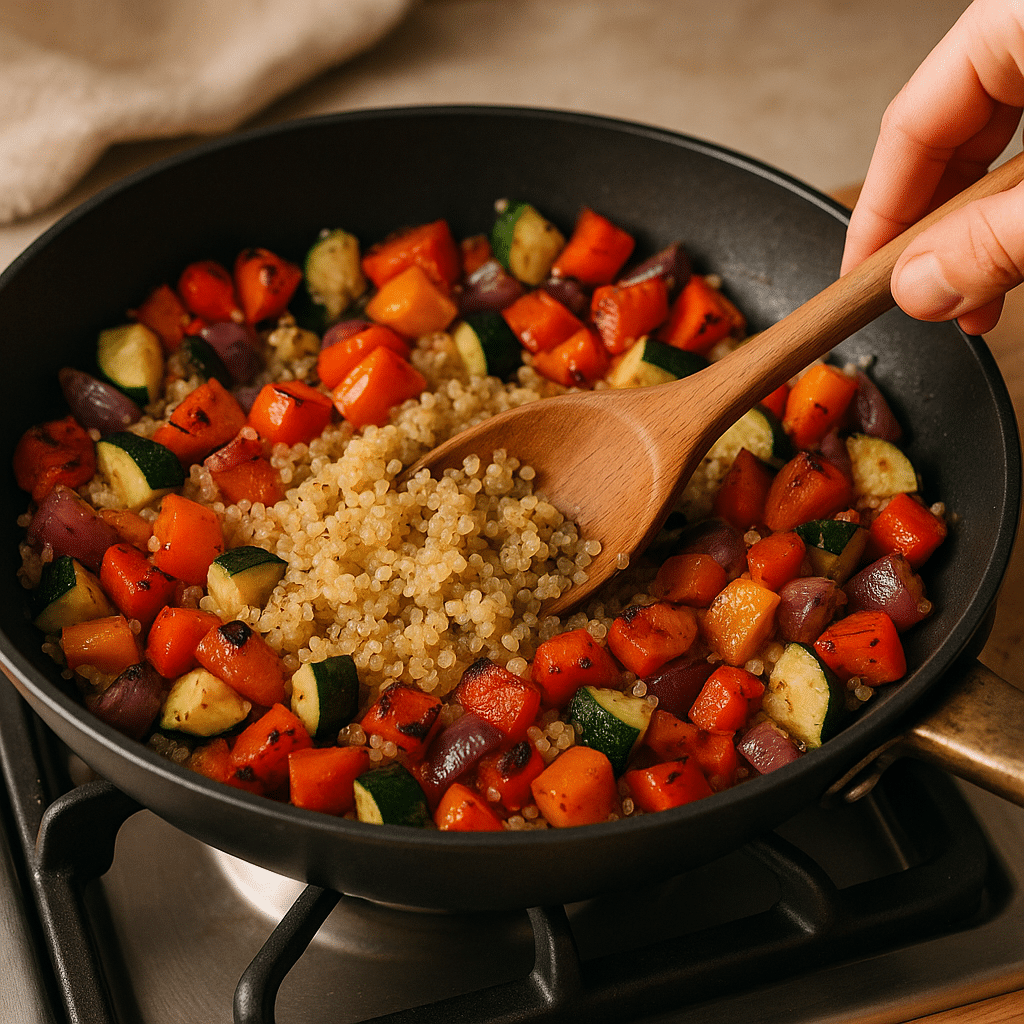
Buddha bowls, soups, sheet pan veggies with chicken or tofu—these make sticking to GLP-1 friendly recipes realistic, even on your busiest days.
Portion Sizes and Nutrient Timing
GLP-1 medications naturally slow digestion, so eating smaller, balanced meals throughout the day can prevent discomfort. Avoid oversized portions and instead, build plates with intention. Each meal should include protein (20–30g), fiber (at least 5g), and healthy fats like avocado or olive oil. Our Green Power Smoothie is a great way to start your morning with energy and digestion in mind.
By prepping smart and portioning right, GLP-1 friendly recipes become a long-term lifestyle, not a short-term fix.
GLP-1 Friendly Recipes with Natural Activators
If you’re not on medication—or want to boost its effectiveness—there are natural ways to stimulate your body’s own GLP-1 production. Certain foods and lifestyle habits act as natural GLP-1 activators, making GLP-1 friendly recipes even more powerful. Let’s explore what to include in your meals to naturally enhance GLP-1 levels.
Protein and Fermented Foods
Research shows that whey protein, eggs, and yogurt can increase endogenous GLP-1 secretion. Consider recipes like our Blueberry Cottage Cheese Breakfast Bake, which combines dairy protein and fiber in a satisfying dish that’s friendly to both blood sugar and gut health.
Fermented foods like kimchi, kefir, or miso also support the gut-brain axis—an essential link in GLP-1 signaling. Try incorporating these ingredients into your own bowl recipes or side dishes to elevate your gut flora and GLP-1 response.
Fiber, Flavonoids, and Lifestyle Boosts
Soluble fiber—found in oats, apples, and legumes—slows digestion and promotes satiety. Our Gestational Diabetes Quinoa Bowl delivers fiber, protein, and a hint of lemon that wakes up your palate while keeping glucose steady.
Flavonoid-rich foods like dark chocolate, citrus fruits, and green tea also support GLP-1 signaling. Add a small square of 85% dark chocolate after dinner or sip unsweetened matcha for an afternoon boost.
Even exercise helps: regular movement, especially resistance training, naturally elevates GLP-1 and improves insulin sensitivity. When you pair movement with GLP-1 friendly recipes, your body has the tools it needs to thrive—naturally.
GLP-1 Friendly Recipes That Support Better Digestion
One side effect of GLP-1 medications like Ozempic or Wegovy is slower digestion. While this helps with appetite control, it can also lead to bloating, nausea, or discomfort if your meals aren’t thoughtfully composed. That’s where well-crafted GLP-1 friendly recipes come in. With the right ingredients and habits, digestion becomes smoother and mealtimes more enjoyable.
Cooked Veggies and Gentle Fiber
Raw salads may feel “clean,” but for many GLP-1 users, cooked vegetables are far easier to digest. Steam, roast, or sauté greens and root veggies to soften fiber and reduce strain on your stomach. Our Roasted Vegetable Quinoa Bowl is perfect for a gentle, nutrient-packed lunch or dinner.
Legumes and seeds can be challenging, too. Soaking and cooking them well helps break down difficult fibers. Our Creamy Roasted Garlic Tomato Soup offers warmth and flavor with zero digestive stress.
Meal Timing, Chewing, and Mindfulness
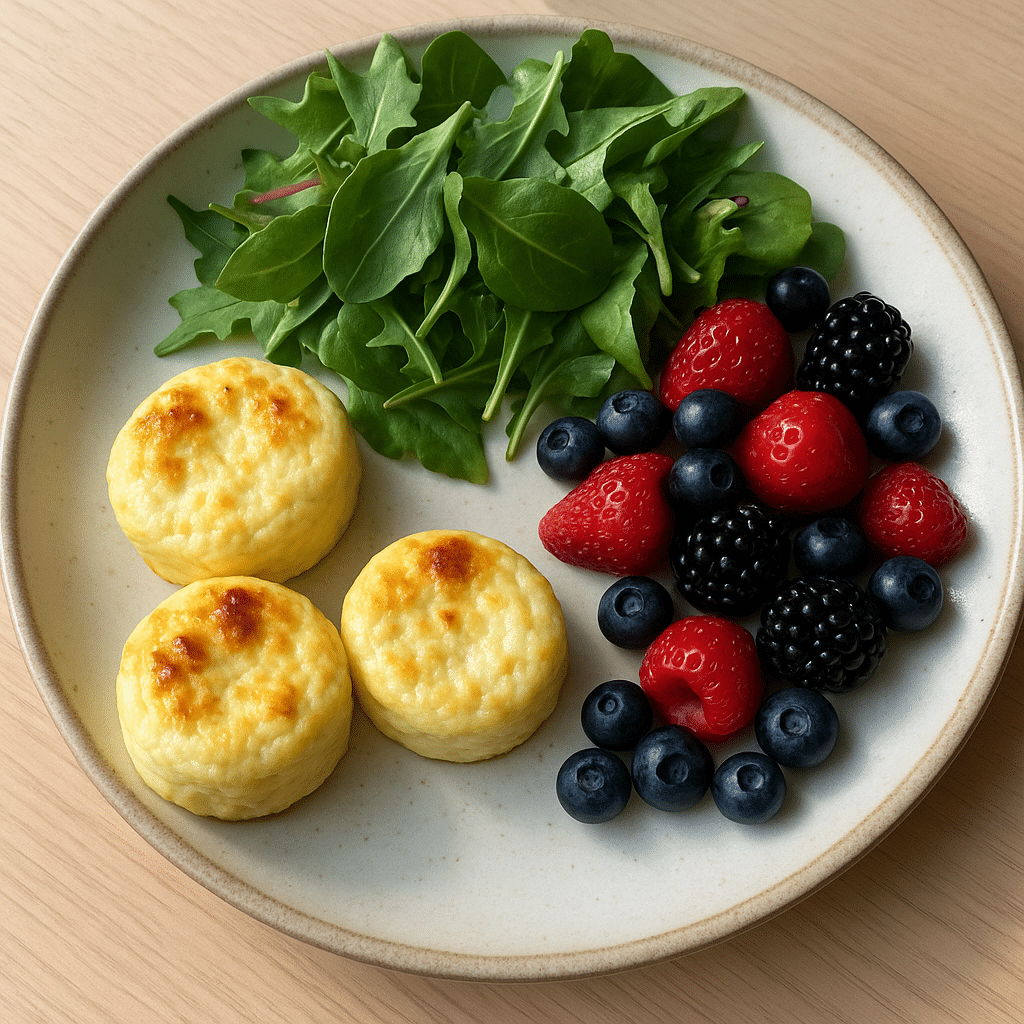
On GLP-1s, your body needs more time to process food—so give it that. Eat slowly, chew thoroughly, and avoid overeating. Aim for small meals spaced out during the day. Add a short walk after meals to stimulate digestion and reduce post-meal sluggishness.
Most importantly, listen to your body. Even the best GLP-1 friendly recipes can cause issues if rushed or eaten under stress. Slow down, enjoy the process, and nourish your system with meals that work with your medication, not against it.
Frequently Asked Questions About GLP-1 Friendly Recipes
What to eat for dinner on GLP-1?
Choose a balanced meal with lean protein, cooked vegetables, and healthy fats. GLP-1 friendly recipes like grilled salmon with steamed broccoli or turkey-stuffed bell peppers keep you satisfied without overloading your digestive system. Small portions help manage side effects while supporting your GLP-1 goals.
How can I raise my GLP-1 naturally?
You can naturally support GLP-1 levels by eating high-protein foods, fermented ingredients, and fiber-rich meals. Try GLP-1 friendly recipes that include eggs, Greek yogurt, oats, and quinoa. Regular movement and adequate sleep also play a big role in boosting your body’s own GLP-1 production.
What is a natural GLP-1 activator?
Natural GLP-1 activators include protein-rich foods like whey and eggs, as well as fermented items like kimchi or kefir. Recipes that blend these ingredients—like savory cottage cheese bakes or quinoa bowls with pickled veggies—are perfect examples of GLP-1 friendly recipes that activate the hormone naturally.
How to help food digest on GLP-1?
To aid digestion while on GLP-1, eat smaller meals slowly, focus on cooked veggies over raw, and chew thoroughly. Incorporating warm, easy-to-digest GLP-1 friendly recipes like soups, stews, and soft grains helps minimize bloating and discomfort while still providing balanced nutrition.
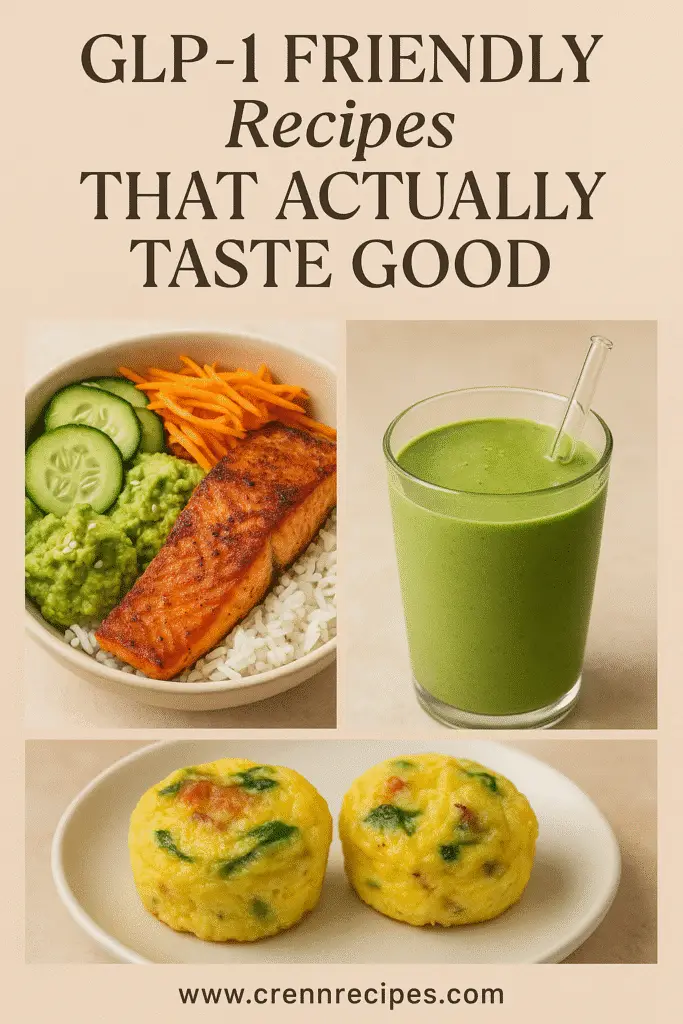
Looking for inspiration you can save and return to later? Follow CrennRecipes on Pinterest for visual meal ideas, prep hacks, and seasonal GLP-1 friendly boards.
Conclusion: GLP-1 Friendly Recipes That Nourish and Empower
Eating well on a GLP-1 journey doesn’t mean bland food or complicated rules. With the right ingredients, smart portions, and thoughtful prep, GLP-1 friendly recipes can be deeply satisfying and joyfully simple. From fiber-rich bowls to protein-packed breakfasts, you’ve got the tools to feel nourished, light, and in control.
Remember, cooking is more than a task—it’s a relationship with your body and your goals. Whether you’re supporting your digestion, boosting natural GLP-1 production, or just making better choices one meal at a time, your plate can be a powerful ally.
So go ahead—open your fridge, roll up your sleeves, and enjoy the process. The next GLP-1 friendly recipe you create might just become your new favorite. And if you ever need more ideas, CrennRecipes.com is always here to inspire your next dish.
PrintGLP-1 Friendly Recipes for Delicious, Balanced Living
- Total Time: 30 minutes
- Yield: 2 bowls 1x
Description
This GLP-1 friendly quinoa bowl combines cooked vegetables, protein, and healthy fats to support digestion, blood sugar, and fullness. Great for lunch or dinner!
Ingredients
1 cup cooked quinoa
1/2 cup roasted sweet potatoes
1/2 cup steamed broccoli
1/4 cup chickpeas
1 boiled egg, sliced
1 tbsp tahini
1 tsp lemon juice
Salt and pepper to taste
Instructions
1. Prepare quinoa according to package instructions.
2. Roast sweet potatoes at 400°F for 20 minutes, season with salt.
3. Steam broccoli until bright green and tender, about 5 minutes.
4. Warm chickpeas in a skillet or microwave.
5. Assemble bowl with quinoa as base, top with sweet potatoes, broccoli, chickpeas, and sliced egg.
6. Drizzle tahini and lemon juice over the top.
7. Season with salt and pepper, then serve warm or chilled.
Notes
This recipe can be doubled for meal prep. Swap egg for grilled tofu for a plant-based version.
- Prep Time: 10 minutes
- Cook Time: 20 minutes
- Category: Lunch
- Method: Stovetop
- Cuisine: Healthy
Nutrition
- Serving Size: 1 bowl
- Calories: 360
- Sugar: 4g
- Sodium: 420mg
- Fat: 18g
- Saturated Fat: 3g
- Unsaturated Fat: 12g
- Trans Fat: 0g
- Carbohydrates: 32g
- Fiber: 7g
- Protein: 17g
- Cholesterol: 190mg

